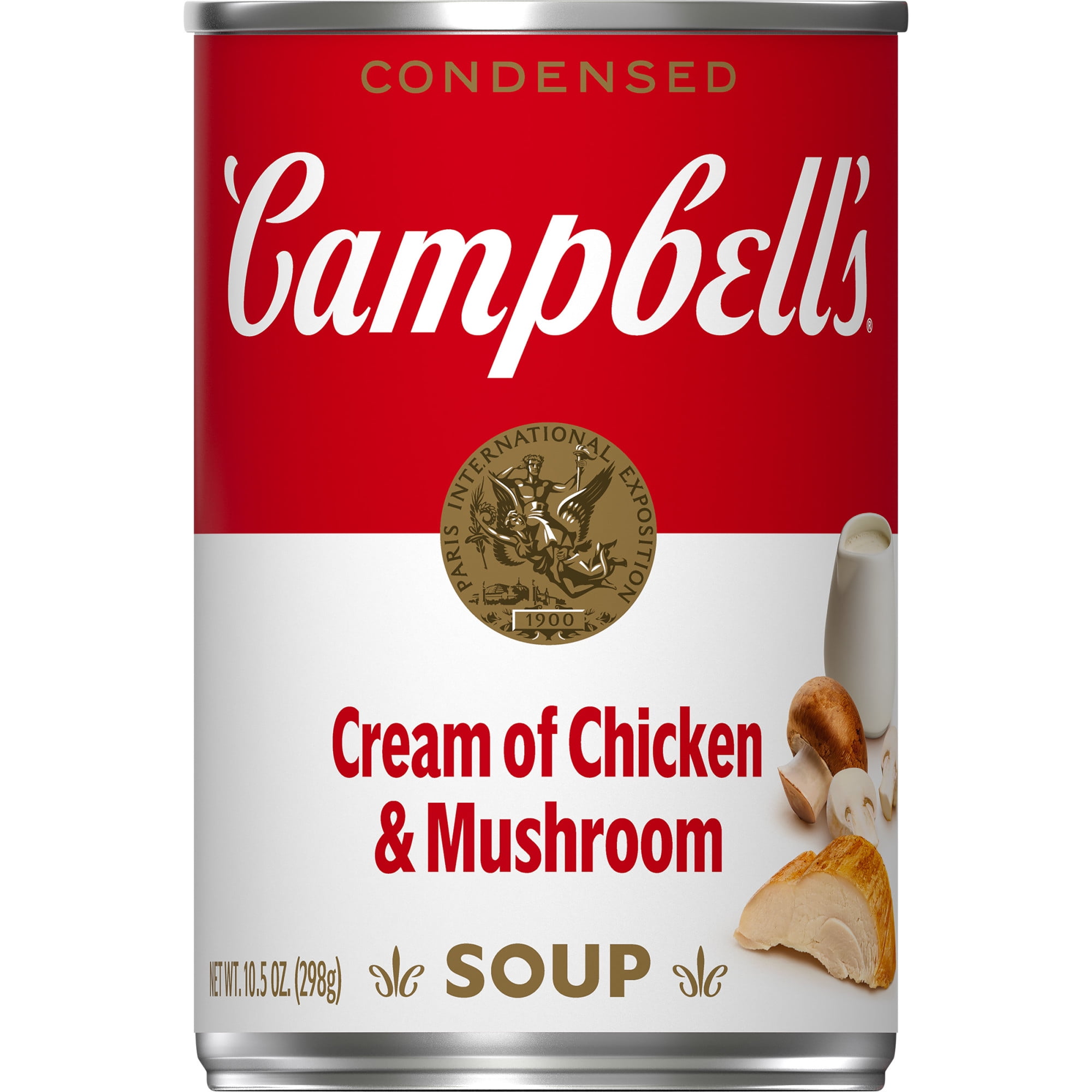Is Campbell's Condensed Cream of Chicken and Mushroom Soup, 10.5 oz Can Alpha-Gal?

Description
Rich, savory and subtly earthy flavors combine with a smooth, creamy, slightly thick texture that pours and blends easily; commonly used as a pantry shortcut for casseroles, sauces, pot pies, gravies or reheated as a soup. Reviewers cite consistent convenience and versatility, with occasional comments about strong seasoning or thickness.

Description
Rich, savory and subtly earthy flavors combine with a smooth, creamy, slightly thick texture that pours and blends easily; commonly used as a pantry shortcut for casseroles, sauces, pot pies, gravies or reheated as a soup. Reviewers cite consistent convenience and versatility, with occasional comments about strong seasoning or thickness.
Ingredients
Chicken Stock, Mushrooms, Modified Food Starch, Vegetable Oil, Wheat Flour, Cream (Milk), Chicken Meat, Chicken Fat, Contains Less Than 2% Of: Salt, Dehydrated Whey, Dehydrated Mechanically Separated Chicken, Monosodium Glutamate, Soy Protein Concentrate, Water, Yeast Extract, Flavoring, Beta Carotene For Color, Soy Protein Isolate, Sodium Phosphate, Celery Extract, Dehydrated Mushrooms, Dehydrated Chicken, Onion Extract, Sunflower Oil, Butter (Cream, Annatto)
What is a Alpha-Gal diet?
An Alpha-Gal diet eliminates mammalian meat and products containing mammalian-derived ingredients to prevent allergic reactions in people with alpha-gal syndrome. This includes beef, pork, lamb, dairy products, gelatin, and certain medications derived from mammals. The condition involves a specific sugar molecule found in most mammals, often triggered after a tick bite. People may experience delayed allergic reactions 3-6 hours after consuming trigger foods. The diet focuses on safe alternatives like poultry, fish, and plant-based proteins. When followed carefully, often with guidance from an allergist or dietitian, it can prevent serious reactions while maintaining adequate nutrition.


